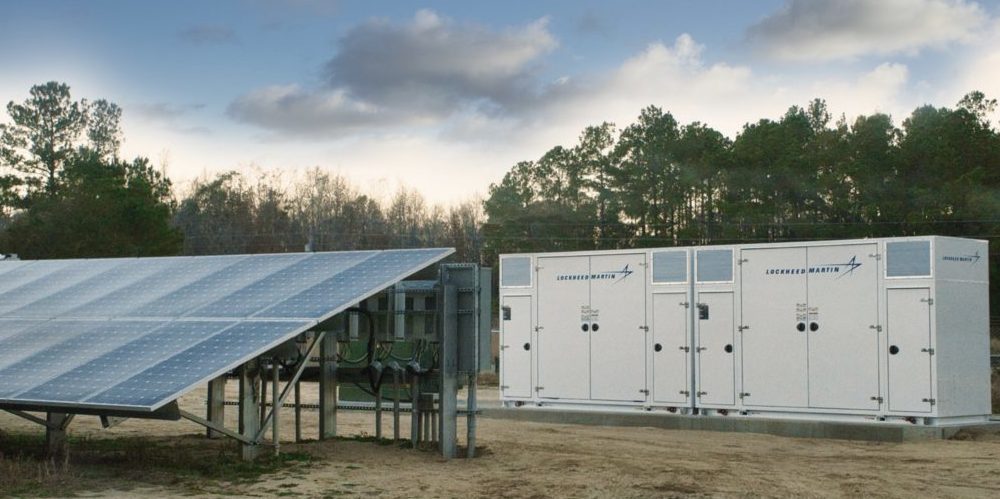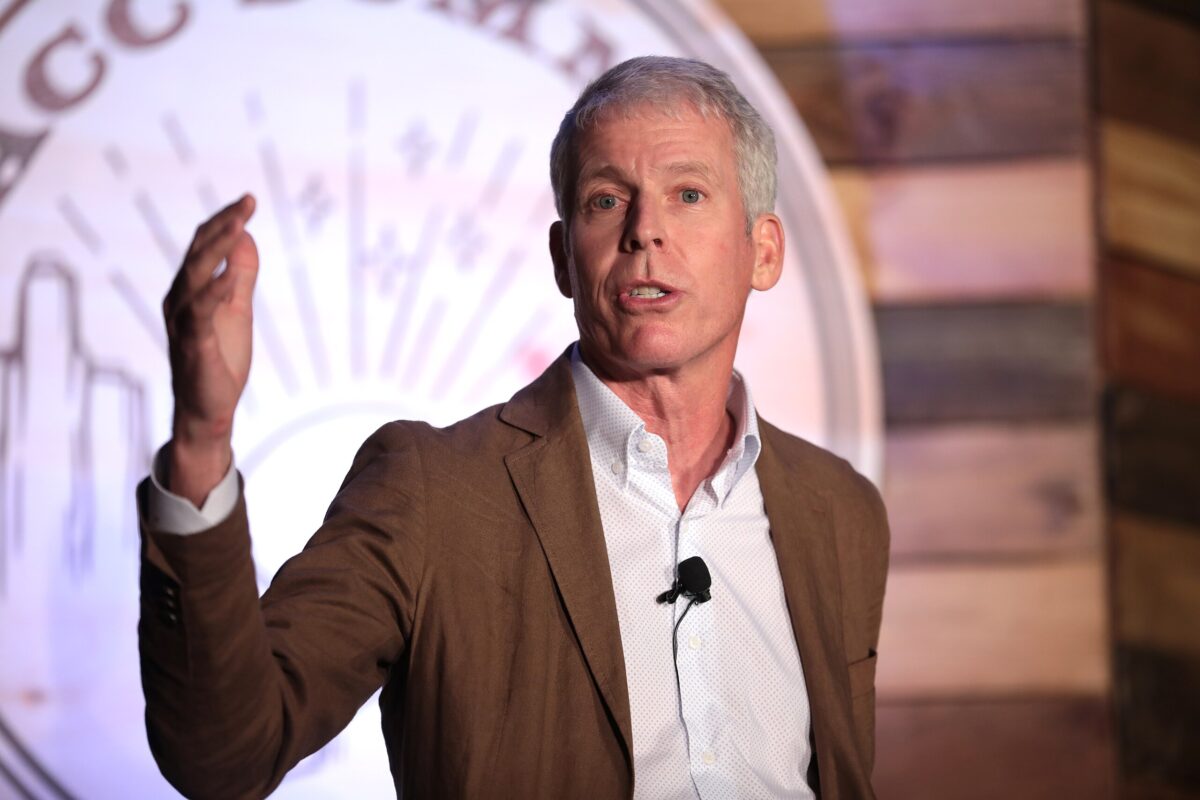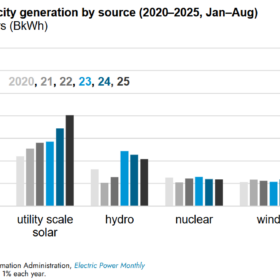Those in power fight longer wars, on many fronts. For instance, monopoly protected utilities pay actors, attempt to impose discriminatory charges on political opponents, they dismantle federal programs once they start to become effective – and are so confident in their monopoly protection that they and their allies will publicly flaunt their actions “for the express purpose of undercutting the viability of solar power.” It’s the seeming nature of those who wish to sustain their position beyond its time.
Duke Energy is seeking to add an “Integration Services Charge” to all future solar power projects, and those with “legally enforceable obligations” established after November 1, 2018. This means contracts established under the Public Utilities Regulatory Policies Act of 1978 (PURPA), as well as potentially projects under Duke’s Green Source Advantage (GSA) program, as well as anything in Duke’s Competitive Procurement of Renewable Energy (CPRE) program after the first tranche.
The utility commissioned a study from Astrape Consulting, that notes the “companies’ fleet resources must have sufficient flexibility to ramp up and down to accommodate fluctuations in solar output” and that “intermittent and nondispatchable resources have a direct impact on system operations, including costs”.
The Astrape consulting study proposed an ongoing Integration Services Charges of 0.110¢/kWh for Duke Energy Carolina (DEC) and 0.239¢/kWh for Duke Energy Progress (DEP). It was also suggested that the fees would increase towards a cap of 0.322¢/kWh in DEC territory and 0.670¢/kWh in DEP territory.
With the current rate paid to solar facilities with PURPA contracts about 3.5¢/kWh, this fee would cut compensation by 3.1% in DEC territory, and 6.8% in DEP territory. The charges will be allowed to increase to 9.2% of the value in DEC, and 19% in DEP territory. And since Duke is also, right now, pushing to lower the value paid to these facilities from the current 3.5¢/kWh, compensation would drop further.
It was noted that developers seeking to “reduce or eliminate” the fee should design a solar+storage system in a manner to eliminate additional ancillary services, including, “but not limited to, the relative capacity of the energy storage facility, operational control and performance requirements, as well as associated monitoring of the facility’s operations and remedies for failure to comply.”
The North Carolina Utilities Commission (NCUC) staff has already noted five concerns with the modeling and data assumptions used to develop the charge:
- The proposed SISC would refresh every two years, regardless of the contract term
- The Astrape Study models DEC and DEP as load islands
- When setting a benchmark for system reliability, Duke uses a “no solar” scenario
- Solar volatility was modeled using only one year of historical data
- The Astrape Study only reflects an increase in one type of ancillary service to address solar intermittency, and this particular category of ancillary service is exogenous to the model (forced)
Those projects who have contracted to sell their electricity prior to November 1, 2018 will be exempt from the charge.
Recently, pv magazine USA covered presentations on the value of solar+storage to the North Carolina power grid, and noted that Duke wasn’t paying these resources for the services they added to the grid.
Correction: This article was updated at 2 PM Eastern Time (U.S.) on July 15 to clarify that the charge would apply only to projects with legally enforceable obligations (LEOs), not all projects with PPAs.
This content is protected by copyright and may not be reused. If you want to cooperate with us and would like to reuse some of our content, please contact: editors@pv-magazine.com.








Grid Free or Die!
Monopolies lead towards stagnation. Absolute power corrupts absolutely. Pretty soon, they’ll do like they’ve done in Australia…and make it illegal to defect…
In THE THIRD WAVE, (Toffler 1980), the underlying energy source is photovoltaics, that is “decentralized” from the SECOND WAVE public utility grid and is often juxtaposed with other “THIRD WAVE ENERGY TECHNOLOGY” such as using PV electricity to split domestic tap water for a renewable energy source for HYDROGEN FUEL CELL ELECTRIC VEHICLES.
In Alvin Tofler’s model, DUKE ENERGY is a SECOND WAVE dinosaur.
Carl L. McWilliams
Duke and other utilities are a sore for capitalism…they are acting like communists in a free world and trying all means to impede and block solar and wind energy….Shame on you Duke…you need to be named a Beggar not a Duke !
A very thoughtful observation; “acting like communists in a free world.” As you may know, the underlying controversy in Alvin Toffler’s THIRD WAVE, is which economic system, Capitalism or Communism/Socialism will win the “Third Wave”?
If you have one hour, here is a very compelling (YOUTUBE) overview you will find worthy of your valuable time:
[youtube=https://www.youtube.com/watch?v=hdlZi2KPXhU&w=676&h=381]
Duke is interesting. On the East Coast Duke pushes more natural gas pipeline infrastructure and more natural gas Peaker and generation plants. On the West coast Duke has purchased some solar PV generation assets to insert themselves into the sphere of influence of other utility companies in the area. The recent FERC 841 ruling for energy storage at the wholesale energy generation industry may turn the tables on Duke in the East and allow Duke to leverage its position with the solar PV assets in California to allow Duke to offer a ‘buyout’ of the ever flailing PG&E.
I would submit that this “consultant”, Astrape Consulting was given their data before they were ‘given’ the contract.
Basically what Duke is proposing to do is the same thing the utilities in California have done to dilute the value of residential solar PV. The first thing ALL of them want to do is replace net metering under PURPA with net billing. Net metering gives excess energy generation credits the same retail residential rate during the day. At night the home can reclaim the energy credits at the same rate. Net billing relegates the excess power credits at the (wholesale energy rate) and sells power back to the solar residence at full price OR peak demand price at night. Now a lot of utilities are using the “duck curve” as an excuse to create a TOU, time of use span in the day. Here is where Duke and many others jack the rate per kWh up to that 50 cents to a dollar or MORE per kWh during the TOU period. Usually this is from 3PM to 9PM. This has forced the common practice of solar PV and smart energy storage that can be programmed for arbitrage. The solar PV array excess power is stored during the day and then the D.C. is switched to A.C. during the TOU energy period. Late at night, the energy storage system charges with off peak electricity and is used in the early morning hours of the “duck curve” until the solar panels start producing usable power for the day.
Strange, they don’t enforce that with their own generators.
Most solar home installs use Duke Energy as a battery and backup. Hence the charges make sense as a battery and backup service. At home batteries are expensive, require shelter, and need maintenance. Hence a home owner prefer to opt out. The exemptions make sense too.
True, when playing by PURPA, the net metering allows the excess energy during the day to be credited at the retail rate. Most of the large electric utilities are targeting net metering and want net billing. O.K., so then, the excess power generated during the day will then be credited at the wholesale electricity rate. The problem here is that the utilities want to float the daily wholesale rate AND determine what that rate is. When this happens then you get slammed with TOU rates three to five times the retail electric rate, then you’ve pretty much lost your excess generation credit for the day. Now smart ESS with inverter is becoming the next weapon against the utility. The ESS can be programmed to charge the battery pack during the day from solar PV and at the TOU time of day start up the inverter to keep from buying over priced electricity during the TOU. At late night when off peak or super off peak power is available from the utility, charge the battery pack again for the early morning demand when the solar PV system isn’t making peak power at sunrise to around 8AM.